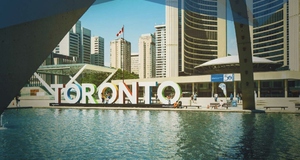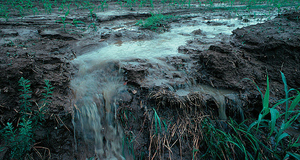From Earth Common Journal VOL. 4 NO. 1The Right and the Good: Communicating Environmental IssuesWidespread Air PollutionChina's Capital, Beijing, is home to more than five million cars and the number is growing (October 17, 2013 “Beijing to impose odd-even car ban in heavy pollution, MalayMailOnline). “It is also home to some of the worst air pollution,” write Armstrong and Ke (October 23, 2013). Reduced visibility, airborne chemicals, and particles small enough to be trapped in lungs have been responsible for traffic accidents, disease, and international attention (Sun, March 30, 2014); “Heavy Smog alert for Beijing as pollution levels goes high,” Wn.com). Angel Hsu (2012), a doctoral student at the Yale School of Forestry and Environmental Studies and Project Director for the 2012 Environmental Performance Index, writes that figures she develops from her research reveal telling trends for China. Hsu’s (2012) article titled, “Seeing China’s pollution from space” in Chinadialogue states that all but four provinces (excluding Taiwan) have average annual exposures of particulate matter measuring 2.5 microns or less. These are above levels recommended by the World Health Organization (WHO) (Hsu, February 20, 2012, para. 10). Hsu (2012) suggests that the start of measuring these tiny dangerous particles indicates that China is opening up about environmental issues. But opening up is a necessity given today’s threat from a changing climate (Hsu, February 20, 2012, sidebar). Joydeep Gupta (2014), South Asia director of The Third Pole, whose writing on climate change, biodiversity, pollution and sustainable development has won him the 2012 Green Globe Award at the Delhi Sustainable Development Summit, quotes the chairman of the world’s biggest collective of scientists, the Intergovernmental Panel on Climate Change (IPCC), Rajendra Pachauri, “Nobody on this planet is going to be untouched by the impacts of climate change” (Gupta, 2014, para. 1). Gupta (2014) reports that the IPCC list incidences around the world that are due to Climate change. He also states that scientists are worried. Species of animals and plants have to migrate to survive. Crop yields are negatively impacted. The world’s poorest communities and regions will be seriously challenged. Scientists have found an increase in heat related mortality and vector borne diseases such as malaria. Extreme weather events like floods, droughts, and storms are more severe and frequent. Gupta (2014) quotes Michel Jarraud, Secretary-General of the World Meteorological Organization: “We have so much evidence [of climate change being caused by human activities] we can no longer plead ignorance” (Gupta, March 31, 2014, para. 10). Risks are listed and Gupta ends with the authors of the report stating the need for global action, data collection, and funding. Over the last few years, Chinese municipal and federal governments have tried a number of contingency plans to combat heavy air pollution. The most recent Chinese plan to fight air pollution describes specific and dire actions to be taken when each of the four alert levels: blue, yellow, orange and red are reached. For example, Yu Jianhua, Director of Air Department in Beijing Environmental Protection Bureau is quoted in an article on the Xinhuanet news: “[W]hen the second highest orange alert is issued major polluters will have to stop production. Regulations also will restrict cars according to the odd-and-even license plate rule that has been in place for years. When the highest amount of pollution persists for at least three days, red alert level, children are kept home from school and 80% of government vehicles are taken off the street.” (Lu Hui (ed), October 22, 2013) Popular opinion in Beijing, reported by Armstrong and Ke (2013) of CNN, states that if only the capital takes steps to solve the pollution problem, while surrounding areas like Inner Mongolia, and Shandong Province continue to pollute, air quality will deteriorate. Comments Armstrong and Ke have chosen from China's popular micro-blogging service, Weibo, support their findings. These online comments reflect a pessimistic attitude. The government understands the importance of bringing people on side (“Beijing announces emergency measures amid fog of pollution,” Oct. 23, 2013). Peter Shadbolt (2014) of CNN reports that government leaders are concerned about public opinion. Special courses on managing online public opinion are being offered. “[M]anaging online public opinion has already become a central fixture of [Chinese] society” (March 11, 2014, para. 2). Shadbolt continues to explain that the importance of providing the truth and preventing rumours and the influence of popular bloggers is emphasized. Our Ecological ConnectionsCholera, a bacterium, has an interesting history that shows how people are integral members of the ecological web of events that we call Earth. Despommier and Chen (2004) write about sailing ships acting as hosts inadvertently spreading the Cholera around the world in bilge water collected near the mouth of the Ganges River and dumped in homeports worldwide. Even though most deaths from Cholera can be avoided if adequate medical care is available, it has claimed many lives. However, we know now that a quick response can save lives. Its deadly reputation has fueled fact-finding frenzies. The organism’s ecology has taught important lessons. Despommier and Chen (2004), state that Cholera is a naturally occurring bacterium that has a symbiotic relationship with water borne animals, Copepods. Copepods are small crustaceans found in the sea and freshwater habitats. Copepods and Cholera exist in semi-enclosed bodies of water where fresh water mingles with salt water, estuaries. During the rainy season, pH and salt content of the estuaries change. Algal blooms form; Zooplankton (crustaceans), such as Copepod increase in number to feed on the blooms and propagate with the help of Cholera bacteria. Cholera bacteria attach to the Copepods as the crustaceans egg sack develops. When necessary the bacteria dissolve the outer egg sack. Eggs and bacteria are dispersed. These are passed along to humans who eat raw filter feeding organisms (crabs, clams, and oysters). While discovering why only a few specific bacteria types affect people, Scientists found that the oceans are thick with viruses (1 to 10 million viral particles for every ml of water). Some contact microbes long enough to infect them. In the distant past this is suspected to have happened to develop today’s deadly strain. This mechanical process, similar to antibiotic resistance, continues when bacteria and viruses associate inside humans and farm-raised animals. These genomic exchanges happen often without dire consequences. But, as human populations increase, and new mixes of bacteria, chemicals, and other products induce subtle environmental changes, what epidemics similar to that of Cholera await? An Individual’s ChoiceSean Watt, an Engineering Tech embodies the ideas of Simon, who Dragos (2009) wrote, suggested that people are resource creators,not destroyers. The Watt family had installed solar panels on their home in Edmonton and at their lake lot. Watt states their reasons for doing this are personal and have nothing to do with “being green.” He simply likes having fun with new technology and acquiring new skills, and he is accomplishing this while getting one step closer to being energy independent. “I actually prefer not to be grouped with the ‘green’ crowd,” Watt says. “I think they mix their politics up in the process of actually just doing something beneficial” (personal communications, Mar. 14, 2011). Watt is doing both the Good and the Right thing. He is meeting self-made goals, saving money, diminishing his negative affect on our environment, and fulfilling his life while meeting the regulations of society, and minimizing his use of petroleum products that degrade the environment.Continued on Next Page » Suggested Reading from Inquiries Journal
Inquiries Journal provides undergraduate and graduate students around the world a platform for the wide dissemination of academic work over a range of core disciplines. Representing the work of students from hundreds of institutions around the globe, Inquiries Journal's large database of academic articles is completely free. Learn more | Blog | Submit Latest in Environmental Studies |

















